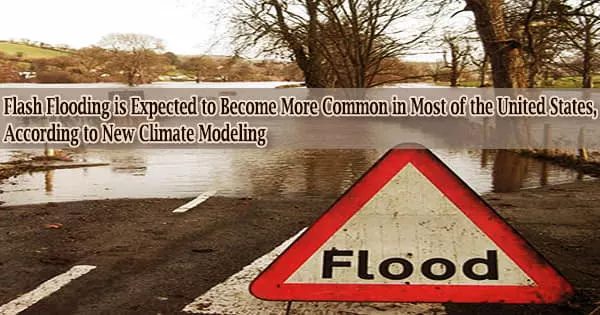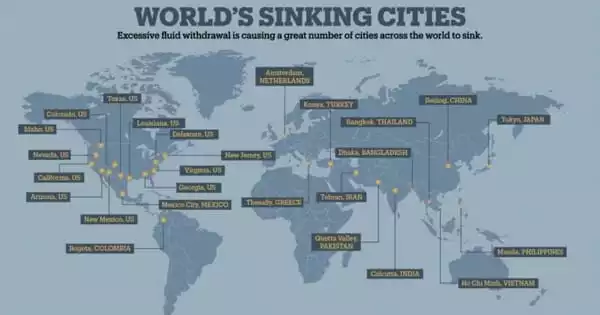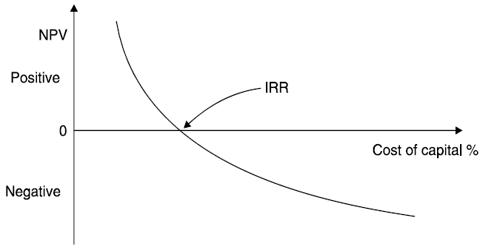Researchers’ studies have proved that some measures of global warming are already inescapable, according to the most recent United Nations report on climate change, and current research efforts are focusing on mitigation and adaptation options. According to the National Aeronautics and Space Administration, this is a worldwide issue that affects local communities.
Similarly, experts at the National Oceanic and Atmospheric Administration are supplying data, tools, and information to help people better understand and prepare for climate change. A change in the frequency of flash flooding occurrences, as well as the places where they most frequently occur, is one of the repercussions of a warmer climate.
A variety of factors trigger flash floods the most common of which being exceptionally high rainfall from thunderstorms. Dam or levee breaks, as well as mudslides (Debris Flow), can cause flash floods.
The amount of rainfall, its location and distribution, land use and terrain, vegetation types and growth/density, soil type, and soil water content all influence how quickly and where Flash Flooding occurs.
Simulations from coupled climate and hydrologic models created by a research team led by the University of Oklahoma, in collaboration with the NOAA National Severe Storms Laboratory and collaborators at the National Center for Atmospheric Research, show widespread increases in the occurrences of flash flooding events across most of the United States.
Yang Hong, a professor of hydrology and remote sensing at OU’s School of Civil Engineering and Environmental Sciences and School of Meteorology, is leading the research. He is the founding director of OU’s online master’s degree in hydrology and water security, as well as the director of the Hydrometeorology and Remote Sensing Laboratory.
Nature: Communications Earth and Environment released the findings of the research team. The first author is Zhi Li, a Ph.D. student at the HyDROS Lab.
“This study builds upon the state-of-the-art model (EF5/CREST) that is jointly developed by researchers with OU, NASA, and NOAA’s National Severe Storms Laboratory and has initiated collaboration with National Center for Atmospheric Research climate scientists,” said Li.
“It realizes the concept of ‘Digital Twin in Earth System Science,’ in which one is our living climate and the other one is our future. Climate change never became so real to me until we successfully collaborated on such research.”
The 20-year return floods will more likely occur every two to five years, especially alarming for the emerging flashiness hotspots that will be facing unprecedented challenges with aging infrastructure and outdated flood risk measures. There is a pressing need to implement climate-resilient engineering infrastructure and develop smart hydrological early warning systems.
Yang Hong
“There hasn’t been a real definitive study on what’s going to happen with flash floods in the future,” said Jonathan J. Gourley, research hydrometeorologist with the NOAA National Severe Storms Laboratory and contributor to the study.
“We didn’t have that robust of an observational record… so, this study helped to fill in that gap. By using some of the rainfall simulations from a convection-resolving climate model and then coupling with our high-resolution hydrologic modeling system, we can see what sort of flash floods would be produced in the future.”
Flash flooding takes people off guard because it happens so suddenly. If they come into high, fast-moving water while traveling, their position could turn dangerous. If people are at their homes or businesses, the water could rise quickly, trapping them or causing property damage before they have a chance to defend it.
The researchers employed climate simulations and modeling over a 30-year period, from 2070 to 2100, to forecast the location and severity of flash floods. The effect, dubbed “flashiness” by the researchers, indicates the chance of climatic conditions that might result in fast rainfall and flash flooding.
They discovered that if present emissions levels are maintained, flooding episodes will become 7.9% “flashier” by the end of the century, implying that heavy rain events will be more likely to occur fast and in concentrated locations, resulting in flooding.
Similarly, their findings suggest a 10% rise in flash flooding in the Southwest United States, the largest increase in “flashiness” among historical flash flood hot regions. With an 8.6% expected increase in flash floods, the central United States is also becoming a new flash flood hotspot. Overall, their findings indicate that future flash flood-prone areas will shift northward.
“More people will have to learn not just how to survive floods but also how to better live with ever-increasing flash floods,” said Hong.
“The 20-year return floods will more likely occur every two to five years, especially alarming for the emerging flashiness hotspots that will be facing unprecedented challenges with aging infrastructure and outdated flood risk measures. There is a pressing need to implement climate-resilient engineering infrastructure and develop smart hydrological early warning systems.”
There is, however, still time to mitigate some of the most severe consequences. Climate mitigation techniques, according to Gourley, could help.
“Now’s the time to start thinking about better flood defenses,” he said. “Of course, decreasing greenhouse gas concentrations would be the ultimate solution, but in the meantime, we can think about ways to reduce vulnerabilities and improve flash flooding safety education.”
“The majority of fatalities related to flash floods are not floods finding people, but people finding floods, meaning they’re out and about,” he added. “They’re typically driving through a flooded roadway.”
Staying off the roadways and avoiding standing water is the greatest way to be safe during flash flooding occurrences.
















